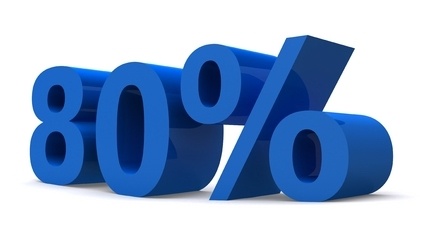Psychological Pricing: 3 Strategies that Work in 2017
 PriceBeam
·
3 minute read
PriceBeam
·
3 minute read

When reading the term psychological pricing, one of the first things that pops into your head is probably that ubiquitous .99 price tag that retailers have been using for ages to trick customers into perceiving the price as smaller than it is. For many decades, this seemed to be the case, and behavioural economists have since dedicated thousands of hours of research examining how price perceptions are formed, and how these can be manipulated in the firm’s favour.
However, today’s customers have a very sophisticated understanding of what their true costs are, and if we’re being pragmatic, the majority of the psychological experiments conducted in dusty university classrooms have limited implications for businesses today.
But there are few that stand out, and consistently show great results for businesses. These are the ones that involve doing actual strategy and take time and effort to implement. But with a little dedication, you will soon see that the payoff is imminent. Here are 3 strategies that can create great results for your business:
#1: Price anchoring
A price anchor is a benchmark which the customer uses to compare the price of a given product. A customer considering buying the new iPhone will compare the price to previous versions, and decide whether the additional features are worth the higher price; the small business owner will compare the HubSpot Basic subscription with the Pro, and decide if the additional functionality is worth it; and in Starbucks this morning you may have considered whether to pay that extra dollar to upgrade the cup size.
The customer compares the additional value he gets with the additional price he pays, and this is where price anchoring comes into the picture. Many businesses can set that anchor themselves - that’s right! At your feet, you have the opportunity to set the reference point for the customer’s price perception. If a SaaS company wants to boost sales for its Premium subscription, one incredibly effective way of doing this is increasing the price of the Basic subscription: in that way, the additional features offered in the Premium subscription will seem like bargain of the century!
“Hold on.. What about the Basic subscription? Surely increasing the price will reduce sales for this product?” This is true, yes. While some companies have a preferred product that they want to sell, and thus don’t mind, others may find this undesirable, which requires that an artificial price anchor is created. That is, a product version with the sole intention to act as a price anchor to other products. Either way, price anchoring is one of the most effective psychological pricing strategies in your toolbox.
Read our full article on price anchoring here
#2: Help Customers Make Wise Decisions
When Wikipedia asks for your donation they don’t ask you to donate $3: they ask you to donate “as little as the price of a cup of coffee”. Wikipedia knows two things: 1) Most of their visitors will regularly buy a cup of joe; and 2) The price of coffee is much higher than the cost that goes into it.
With their statement, they are essentially providing customers with an opportunity to allocate their money more wisely. And customers love making wise choices.
This can be applied to many other types of products, too. If you’re selling analytics software, you remind the client of the infinitely high fees they pay consultants or agencies to perform similar tasks; or if you’re selling business services, remind the customer of the countless hours she spends attempting to perform the tasks herself, rather than spending this time on more interesting activities such as strategy (this is a cost, too).
By referring to unwise decisions, you create a context in which your price will appear relatively lower. But, to reiterate, for this strategy to be effective, two criteria need to be met:
- The customer can identify with your reference
- The reference is made to a product which is primarily based on an emotional perception of value
#3: Prestige Pricing
Having one or several high-priced products in your portfolio can really pay off. Sticking with our SaaS example, it can significantly boost sales for a Pro subscription if a high-priced, more premium version (offering little additional value) is introduced. Customers will see this expensive option and think to themselves “Wow! I would never buy that in a million years, but if someone out there is willing to pay this kind of money for the company’s products, they must really know what they’re doing!”. One of the many functions of prices is that they signal quality, and having high-priced items on the menu tells the customer that the quality is high; despite that the customer will not actually buy this product, he expects that he will benefit from this quality and know-how, too.
This strategy needs to be applied with caution, however. If the “prestige product” appears to be far superior, he will feel that he is buying a light, discount version, and ultimately refrain from buying as he feels he cannot afford the full package.
Side Benefit: Some customers will always prefer the most expensive option, and so, some will buy the prestige product despite that it may not provide great value for money.
Read our full article on prestige pricing here
All companies are different, and what works for others may not work for you. Thus, when applying these strategies, you should adjust them as you go along and fine-tune them to your business. Which one will you try?
.png?width=400&height=100&name=PBLogoTransparent%20(1).png)



